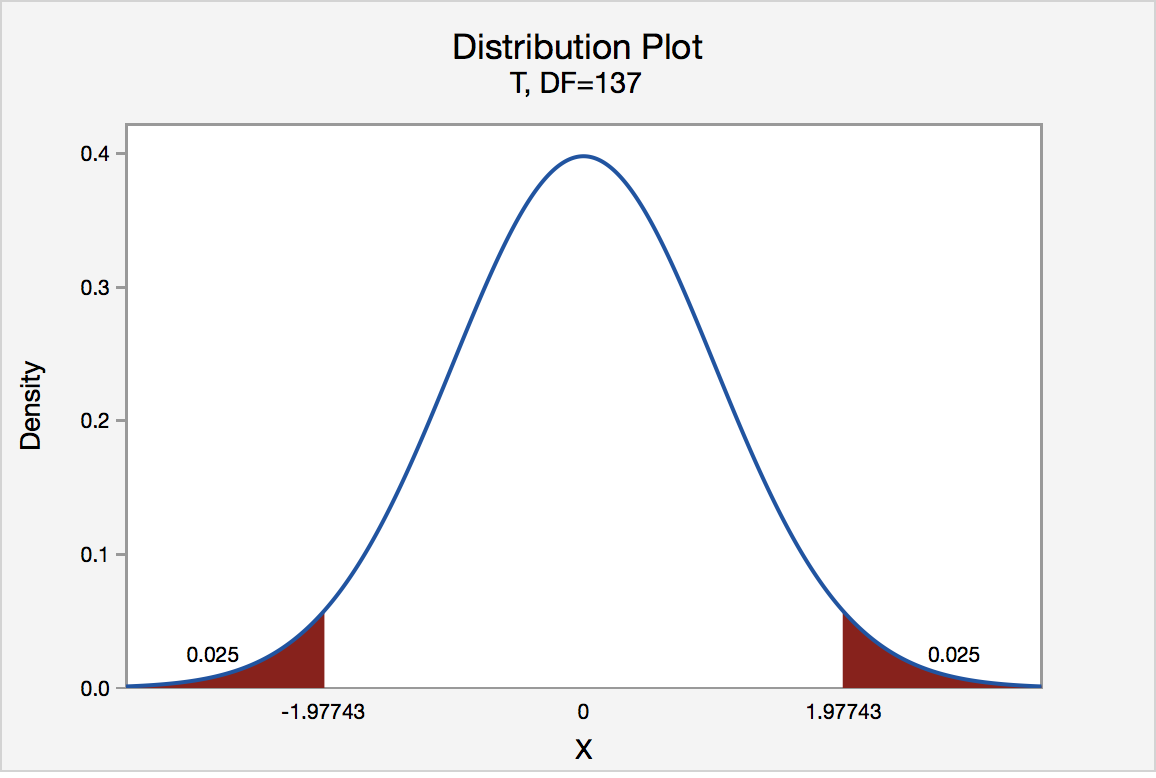Given that the populations are known to be normally distributed, or if both sample sizes are at least 30, then the sampling distribution can be approximated using the \(t\) distribution, and the formulas below may be used. Here you will be introduced to the formulas to construct a confidence interval using the \(t\) distribution. Minitab will do all of these calculations for you, however, it uses a more sophisticated method to compute the degrees of freedom so answers may vary slightly, particularly with smaller sample sizes.
- General Form of a Confidence Interval
- \(point \;estimate \pm (multiplier) (standard \;error)\)
Here, the point estimate is the difference between the two mean, \(\bar{x} _1 - \bar{x}_2\).
- Standard Error
- \(\sqrt{\dfrac{s_1^2}{n_1}+\frac{s_2^2}{n_2}}\)
- Confidence Interval for Two Independent Means
- \((\bar{x}_1-\bar{x}_2) \pm t^\ast{ \sqrt{\frac{s_1^2}{n_1}+\frac{s_2^2}{n_2}}}\)
The degrees of freedom can be approximated as the smallest sample size minus one.
- Estimated Degrees of Freedom
-
\(df=smallest\;n-1\)
Example: Exam Scores by Learner Type Section
A STAT 200 instructor wants to know how traditional students and adult learners differ in terms of their final exam scores. She collected the following data from a sample of students:
| Traditional Students | Adult Learners | |
|
\(\overline x\) |
41.48 | 40.79 |
| \(s\) | 6.03 | 6.79 |
| \(n\) | 239 | 138 |
She wants to construct a 95% confidence interval to estimate the mean difference.
The point estimate, or "best estimate," is the difference in sample means:
\(\overline x _1 - \overline x_2 = 41.48-40.79=0.69\)
The standard error can be computed next:
\(\sqrt{\dfrac{s_1^2}{n_1}+\dfrac{s_2^2}{n_2}}=\sqrt{\dfrac{6.03^2}{239}+\dfrac{6.79^2}{138}}=0.697\)
To find the multiplier, we need to construct a t distribution with \(df=smaller\;n-1=138-1=137\) to find the t scores that separate the middle 95% of the distribution from the outer 5% of the distribution:

\(t^*=1.97743\)
Now, we can combine all of these values to construct our confidence interval:
\(point \;estimate \pm (multiplier) (standard \;error)\)
\(0.69 \pm 1.97743 (0.697)\)
\(0.69 \pm 1.379\) The margin of error is 1.379
\([-0.689, 2.069]\)
We are 95% confident that the mean difference in traditional students' and adult learners' final exam scores is between -0.689 points and +2.069 points.